Creating a sky for 3D games
Stunning Blizzard artist Philip Zhang shared some techniques that will help you create better and more interesting skyboxes.
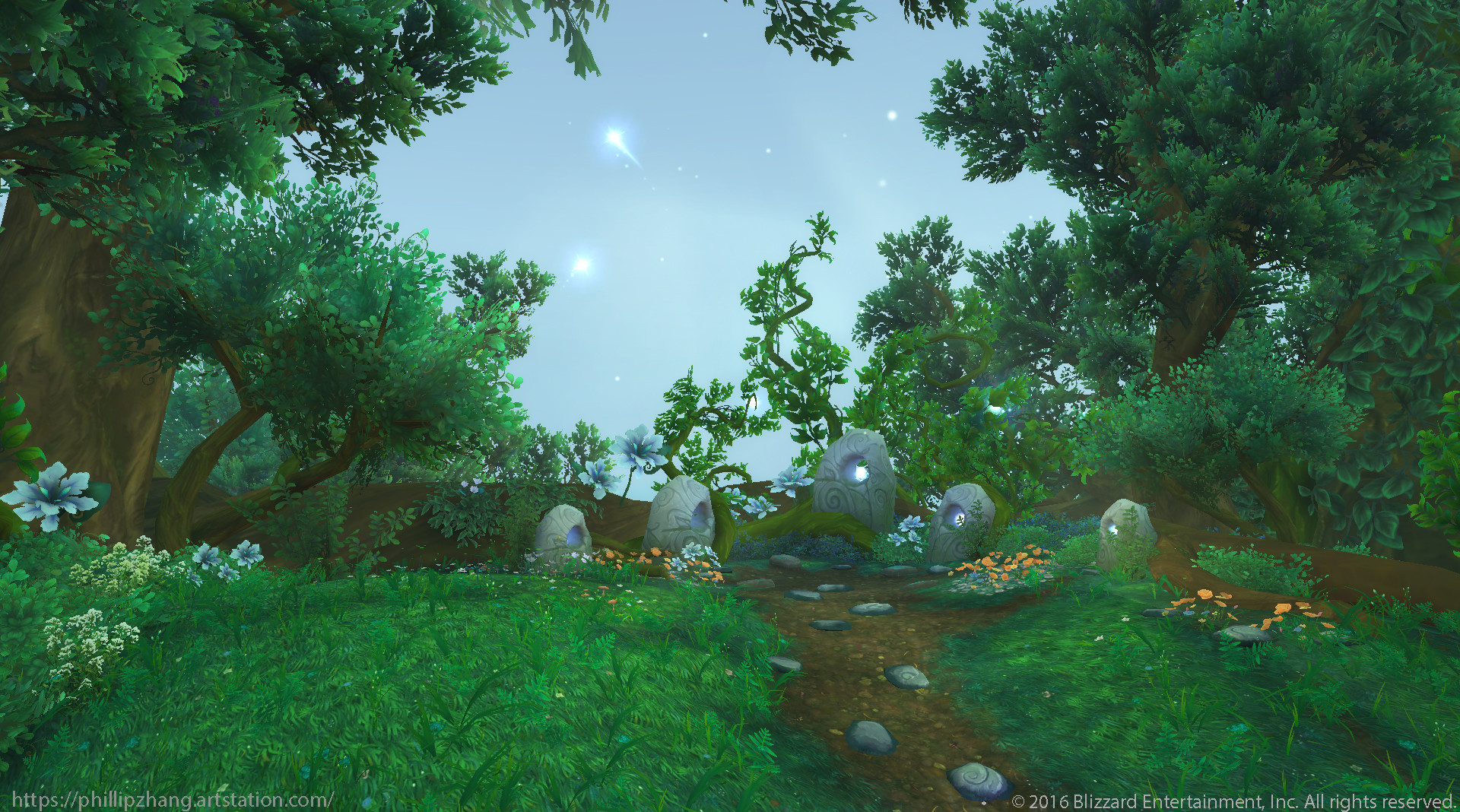
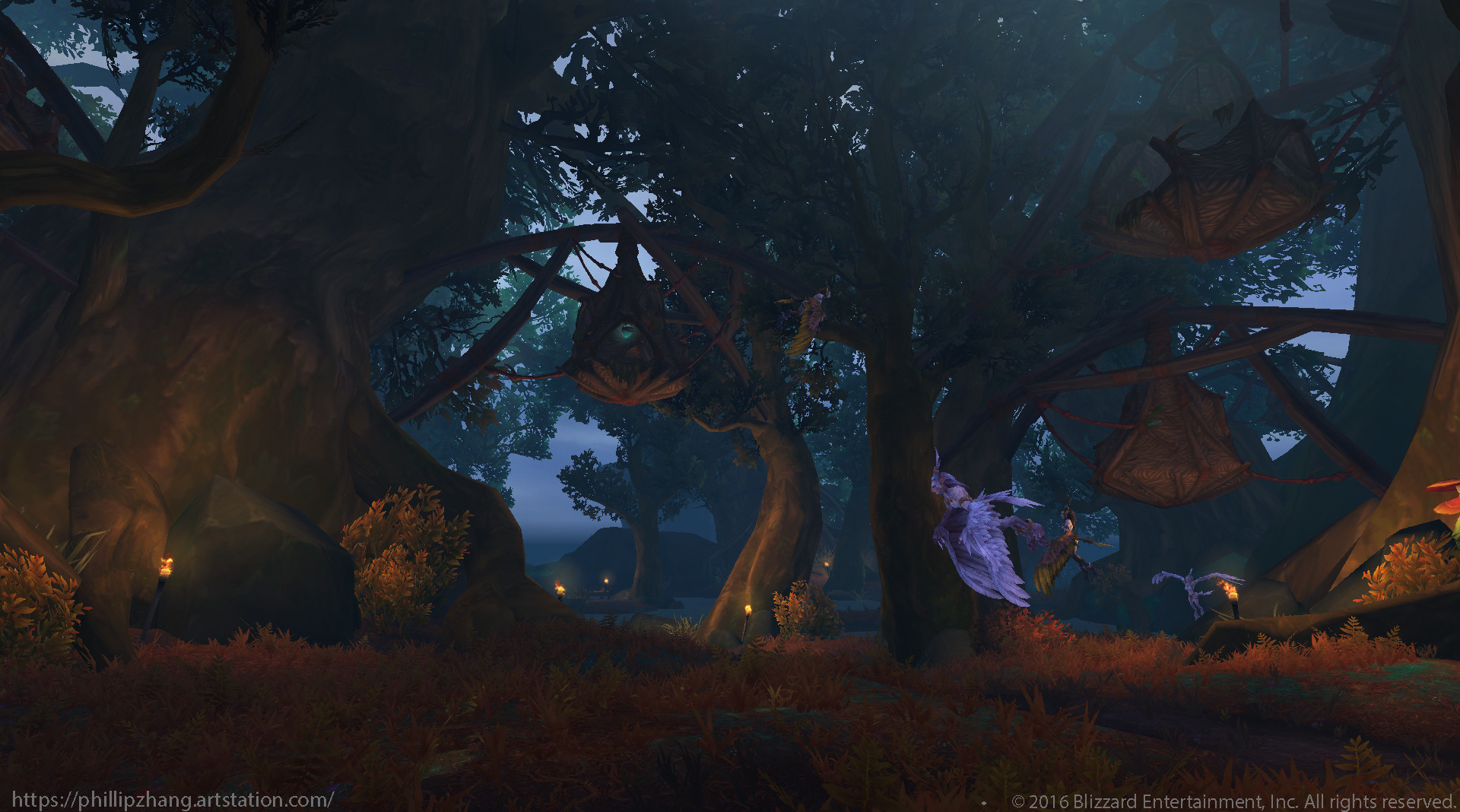
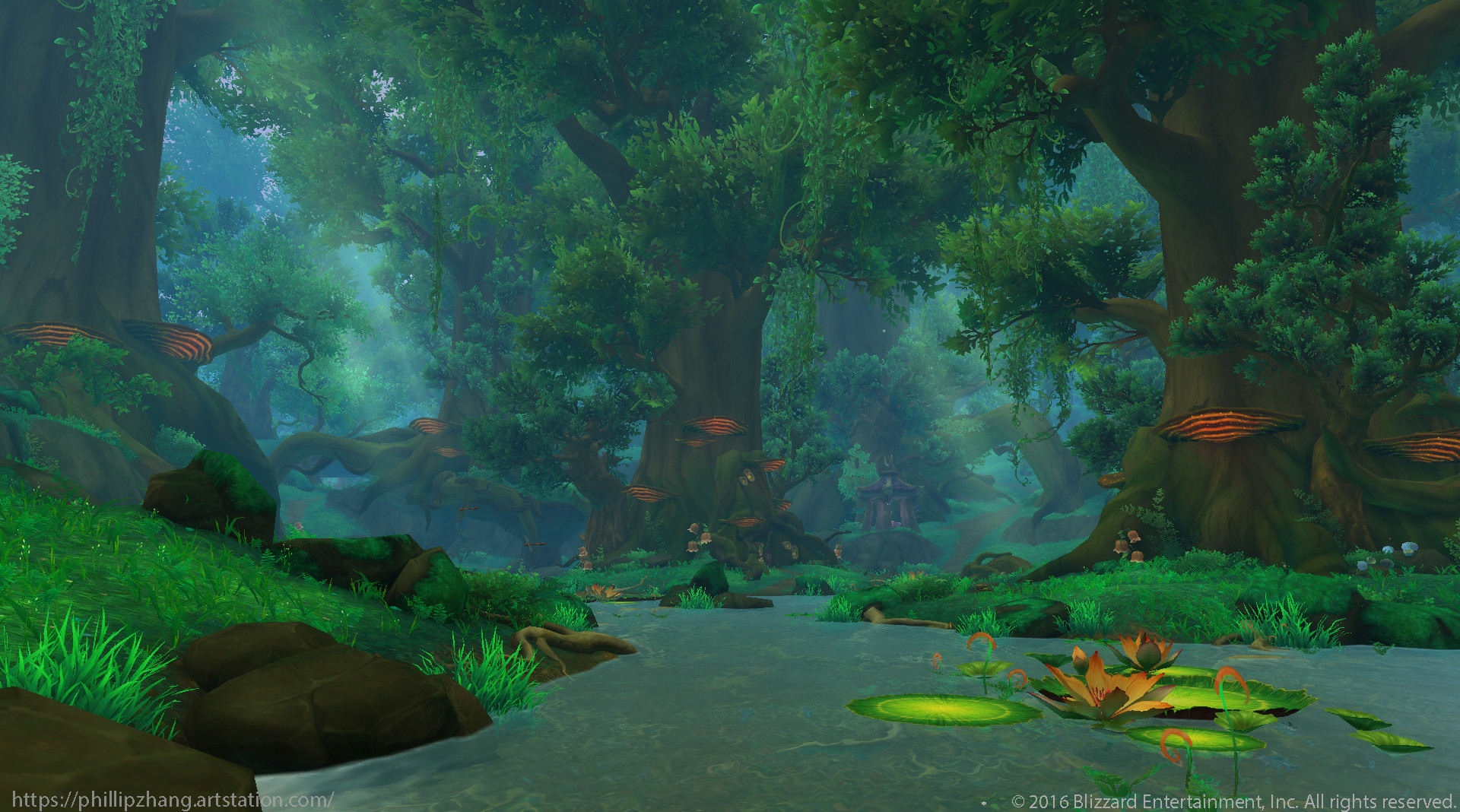
')
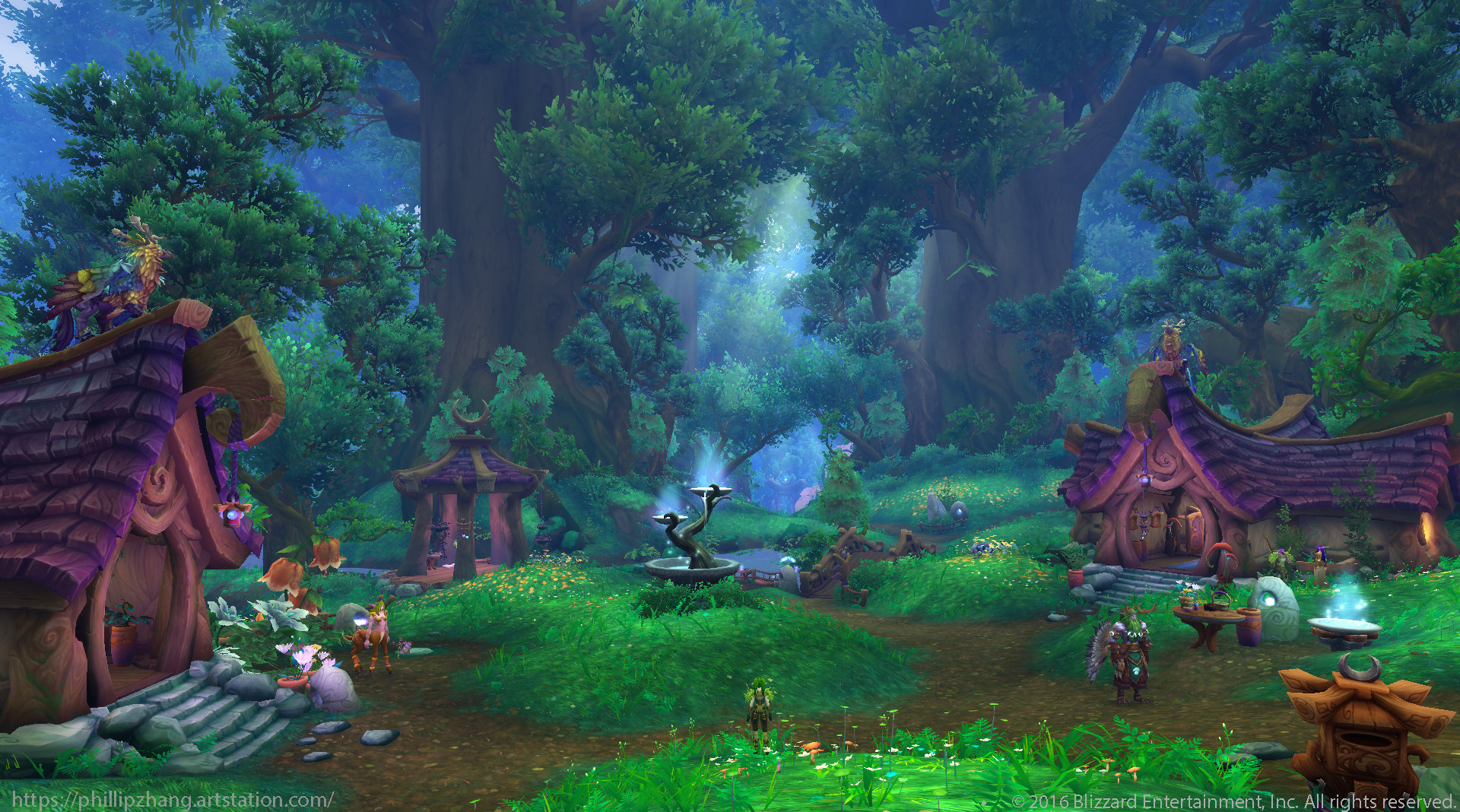
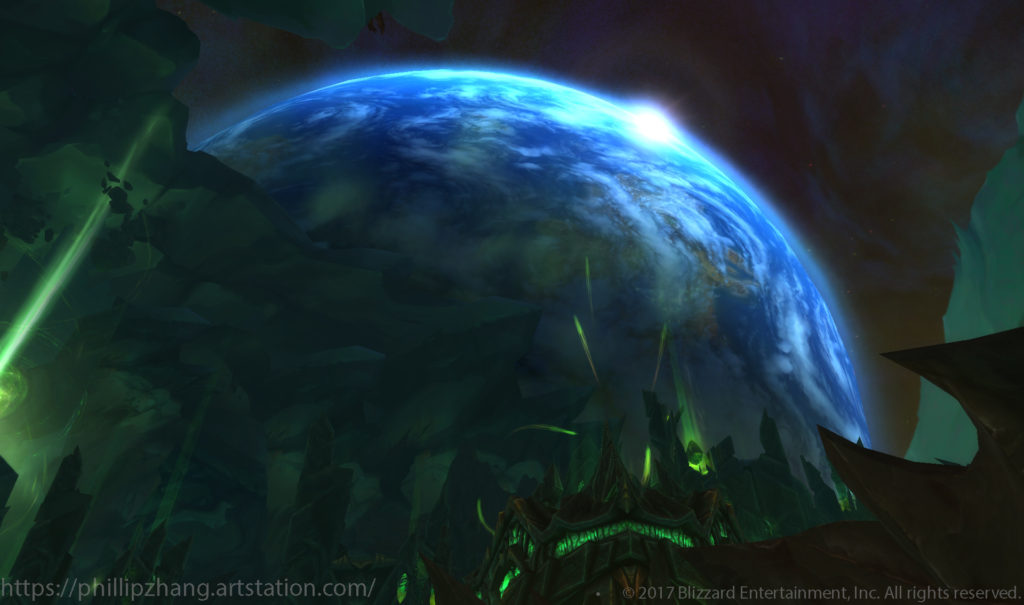
Introduction
My name is Tseyan Zhang , also I am known as Philip Zhang. I am an environmental artist and currently working on World of Warcraft at Blizzard Entertainment. I was born and raised in China, and in my childhood I was always fascinated by drawings and stories, which prompted me to study digital media at the Central Academy of Fine Arts in Beijing. After graduation, I moved to the USA to continue studying game graphics at Laguna College of Art and Design.
After completing my studies, I received my first experience at Disney ABC Television Group as an intern concept artist in 2014. A few months later, I took part in the Blizzard Student Art Contest and was accepted as an intern to the World of Warcraft team. Since then I have worked on World of Warcraft: Warlords of Draenor and World of Warcraft: Legion.
Tasks
In the process of working with the World of Warcraft development team, I worked with the props development team and the environment developers. Before starting to describe the process of working on skyboxes, I would like to share the lessons that I learned while working with these teams.
In the World of Warcraft development team, the artist must create concepts, models and textures from scratch to the end. As an intern in the props team, I worked on a variety of tasks: sets that fit different cultures of different races, resources with the theme of factions for combat arenas, and armor for different classes. The most important thing that I learned from this experience is that each resource has its own history; Each resource is a unique character with its own personality and background. For example, the gates of orcs are made of roughly hewn wood, scratched and covered with blood-spattered leather ties, animal bones, and metal spikes. At the gates of the night elves there is a lush vine and shoots of trees decorated with forest flowers and fruits, because the main value in their culture is the preservation of nature. In my opinion, it is much easier for an artist to create an interesting design if he understands the story he wants to tell.
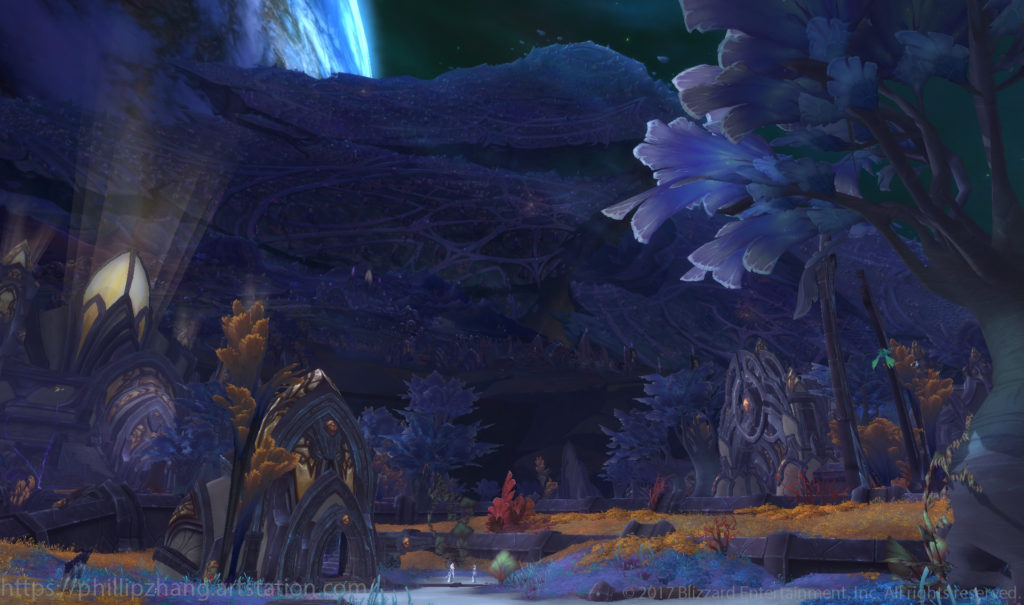


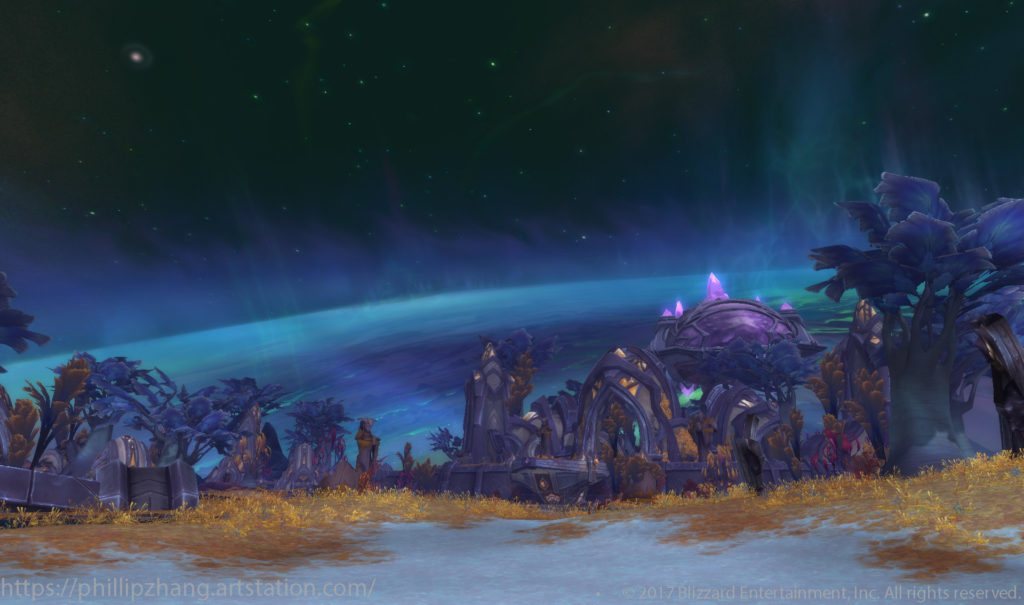
My way of telling a story through my work is well suited for the development team of environments. After completing the internship, I officially began working at Blizzard as an artist in environments. Surrounding artists create trees, vegetation, skyboxes, and land texture tile sets for zones. The most important lesson for me was that, first of all, the overall picture of the scene is always created. A beautiful tree can look good in itself, but spoil the whole composition, attracting too much attention to itself. The surroundings artist should always think about the correlation of color and shape between all resources so that they have a positive effect on the overall look of the scene.
When I start working on a skybox, I strive to visualize the skybox not only as a separate element telling the players a story, but also as a background image that fits into the whole scene.
In August, I became the first environmental artist to begin work on Shadows of Argus (patch 7.3). In order to illustrate the mass of the earth of the destroyed eredar homeworld, I and the designers decided to add to the skyboxes painted World of Warcraft environments. I began to share history with the players - Argus was once the home world of the proud eredar people, and thousands of years ago it was conquered and destroyed by the demonic Burning Legion. At the sketch stage, I allowed my imagination to create a fractured land, demonic fortresses, erupting volcanoes and the ruins of eredar cities. Later, when other artists and designers created an image of most of the playing space, I removed some of the elements that attracted too much attention, and took screenshots of the game relief and buildings, and then added them to my painted environments to make the scenes look holistic.
Structure
The skybox in World of Warcraft is a picture that stretches over the game space. It affects the player's feelings with light, shadows and colors. The development team creates skyboxes based on the nature, history and climate of each location. We also create dynamic weather systems, such as rain or snow, to add variability to the gameplay. Here is more information about the basic structure of the skybox:

The process of creating skyboxes with drawing environments is not too different from creating a regular skybox. Here is an example:
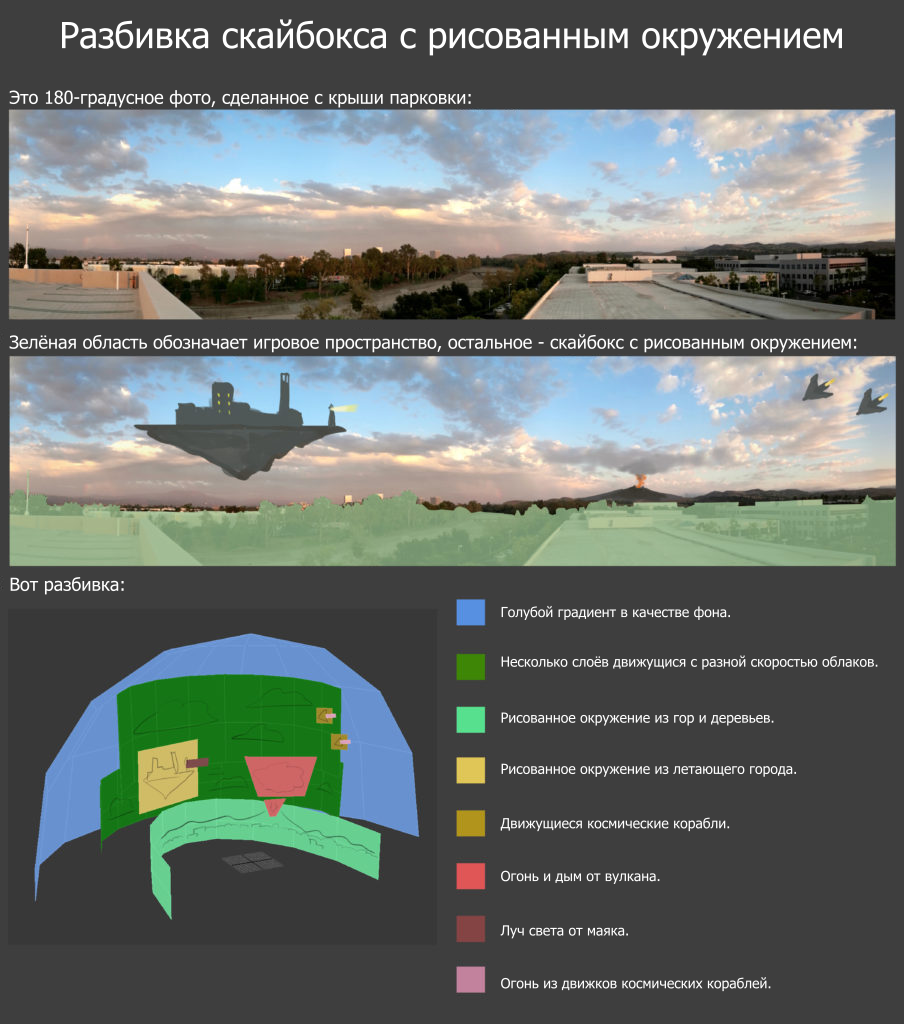
Content
When selecting elements to be added to the scene, it is logical to begin by choosing which elements we can borrow from the foreground. For example, in a painted environment, a mountain with tall pines can stretch for hundreds of miles of skybox. By adding it, we will create a depth and a strong sense of atmosphericity in this environment.

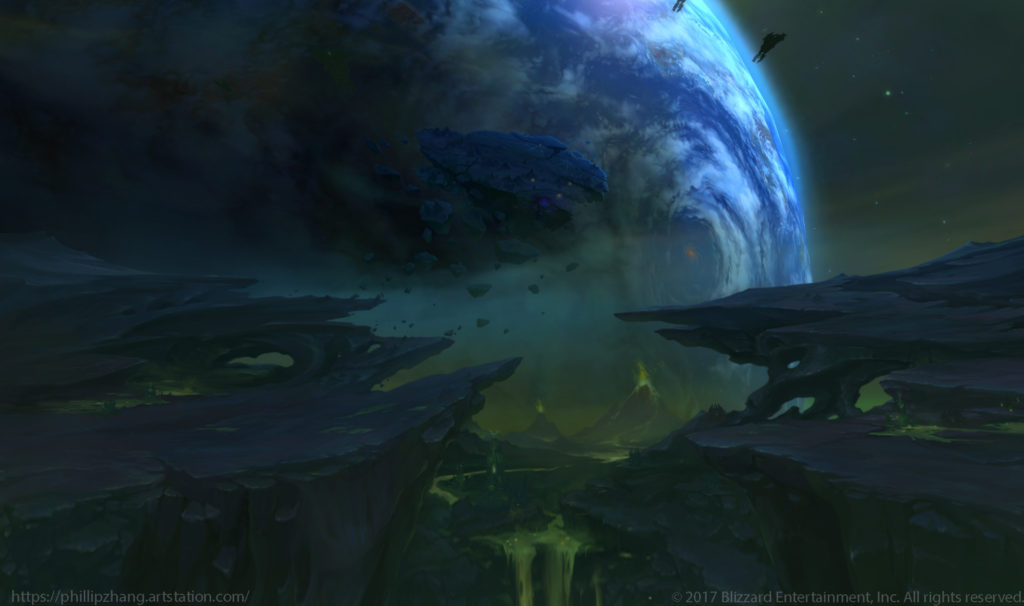
The textures of the blue planet were created by Servando Lupini (a former 3D Blizzard artist).
Skybox is the background of the scene. Players will not be able to immerse themselves in the environment, if the game space and the skybox will be in dissonance. The colors and shapes used in the skybox should always be a reflection of the foreground elements. It is also worth considering how the human eye works, considering the environment in the distance. Objects that are distant from a person usually appear less contrasting than nearby ones. The same goes for skybox resources.
Creating skyboxes with painted environments can be an effective way to solve design problems. Sometimes an ambitious concept — for example, an ancient city in the jungle or a burning spaceship in the sky — requires thousands of hours of work by artists and designers to recreate in 3D space. However, the same effect can be achieved by drawing a painted environment on canvas with a size of 2048 × 2048 pixels in a couple of weeks. I believe that the key to creating a successful environment-related story is effective communication with the team, a statement of the vision, followed by its visualization in drawing environments.
Features of creating stylized skyboxes
A few centuries ago, old masters developed many effective ways to create stunning environments. Over the past two decades, hundreds of amazing digital artists have appeared, inspired by their work. I often visit websites such as Blogger, ArtStation and Pinterest to get examples and inspiration. Here are some of my favorite artists:
Lighting
Skybox lighting must match the stage lighting. After the skybox is complete, the surroundings artist must carefully check the lighting in the scene and make small changes to make it fit perfectly.
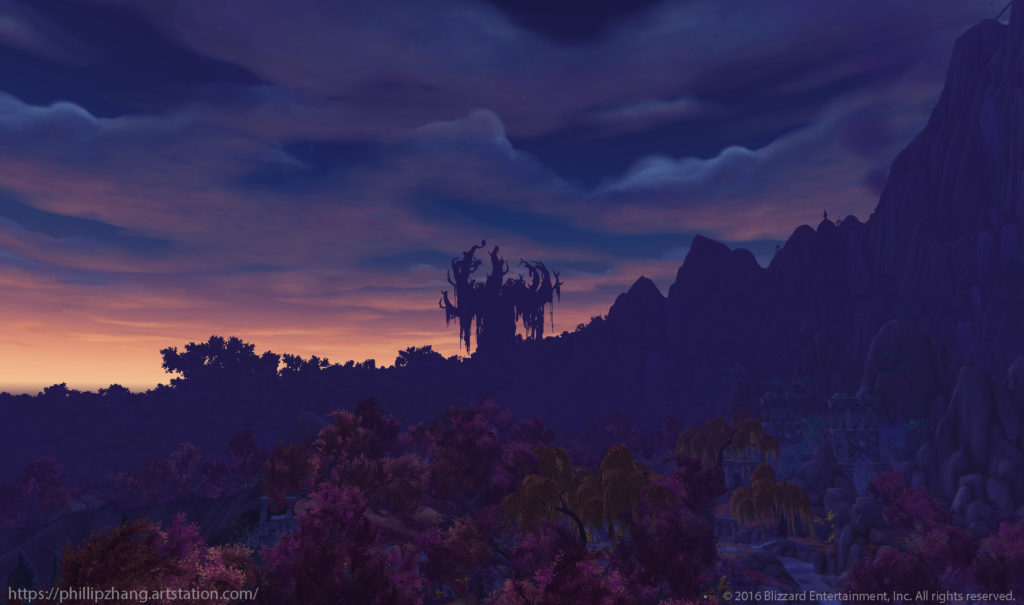
Dome of the sky by Servando Lupini (former Blizzard 3D artist)

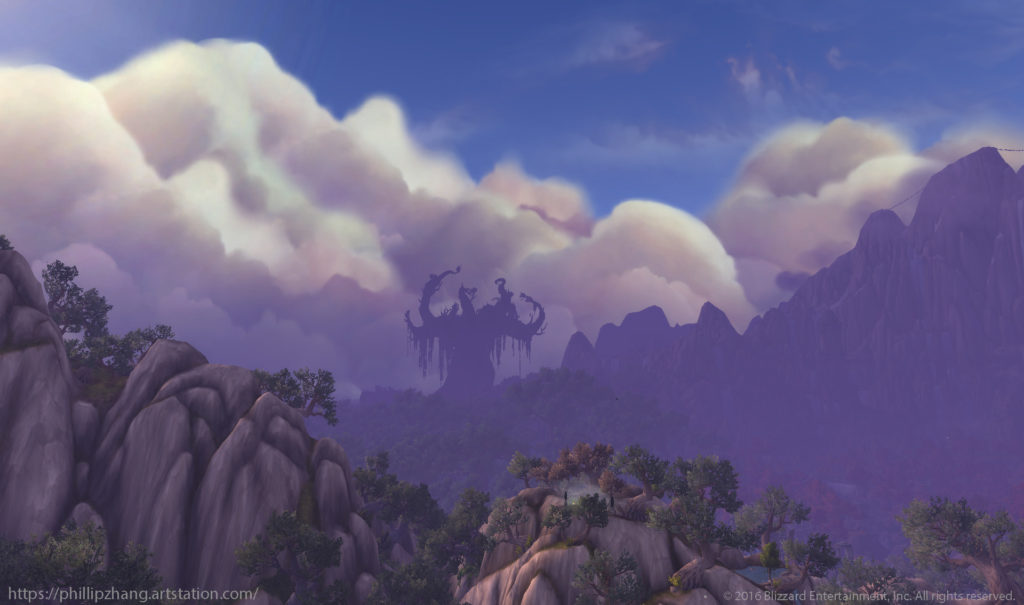
Dome of the sky by Servando Lupini Lupini (former Blizzard 3D artist)

Tips
Knowledge of traditional painting - while studying at Laguna College of Art and Design, I did a lot of painting around. Although this practice would by no means be enough to create a World of Warcraft skybox, it helped me learn the basics of color, lighting, and composition. This knowledge helped me a lot in creating skyboxes with painted environments. No matter what style the artist is trying to achieve - knowledge of the rules of traditional painting always comes in handy.
Tell a story with fiction - compared to other environmental resources, a skybox gives the artist almost endless possibilities for self-expression on his 360-degree canvas. Let the players experience their craziest artistic ideas!
Pay attention to the transitions between important points. At work, I often communicate with level designers. They talk a lot about transitions between important points. When players move from one location to another, the geographical transition should seem natural and logical. I believe the same applies to skybox drawing environments. For example, in a scene where there are streams of water pouring from the mountains, these streams can join the river. The river flows into the canyon and becomes a huge waterfall. It will look much more convincing than a waterfall that appears without a source. Connecting various sources in the environment is a key moment in creating a skybox with a painted environment.

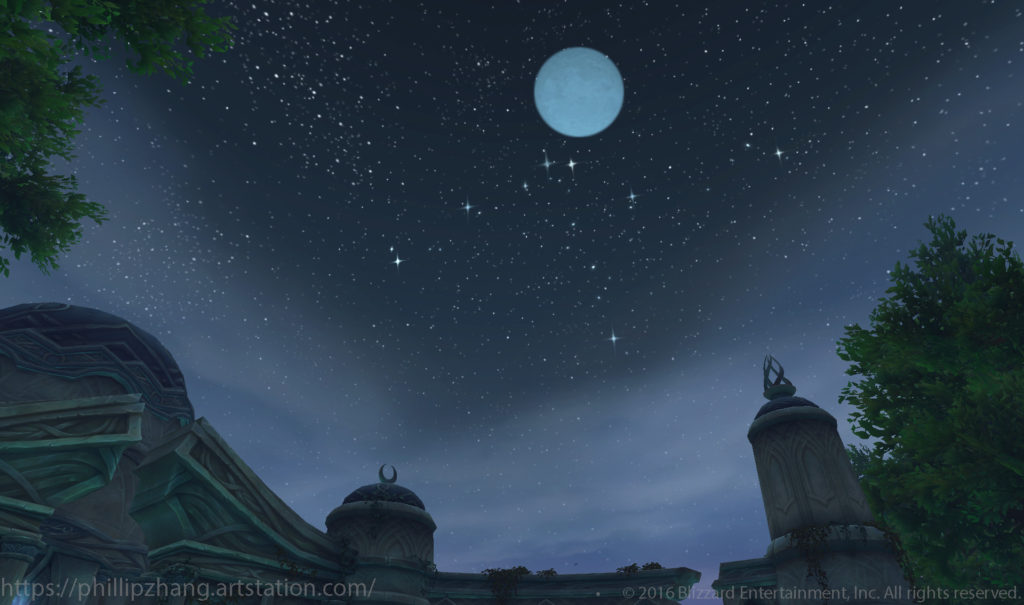
Source: https://habr.com/ru/post/340568/
All Articles